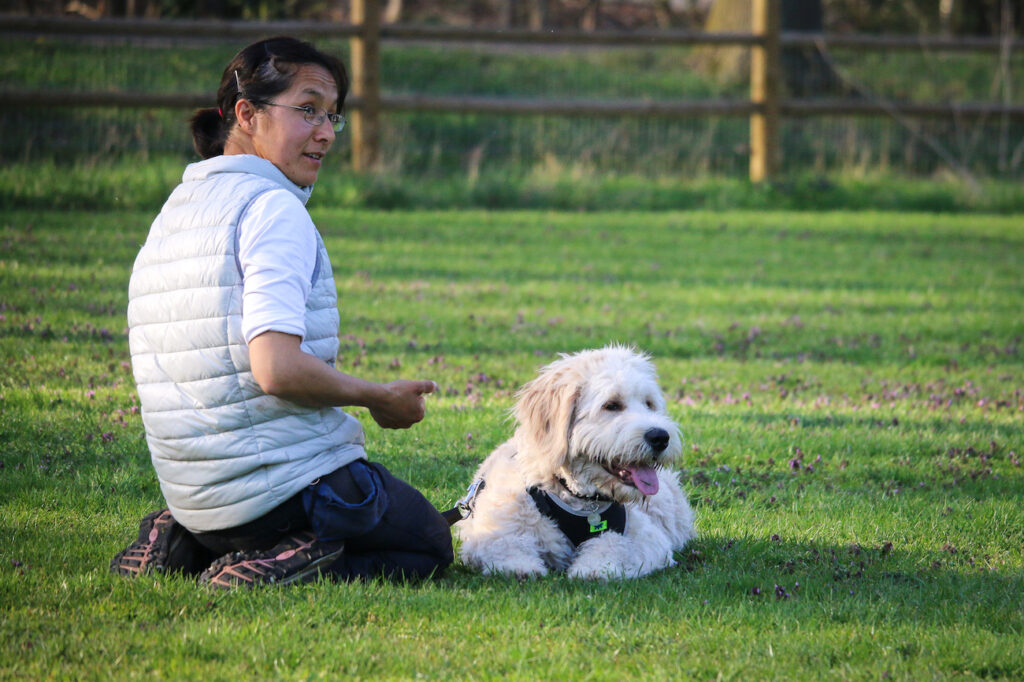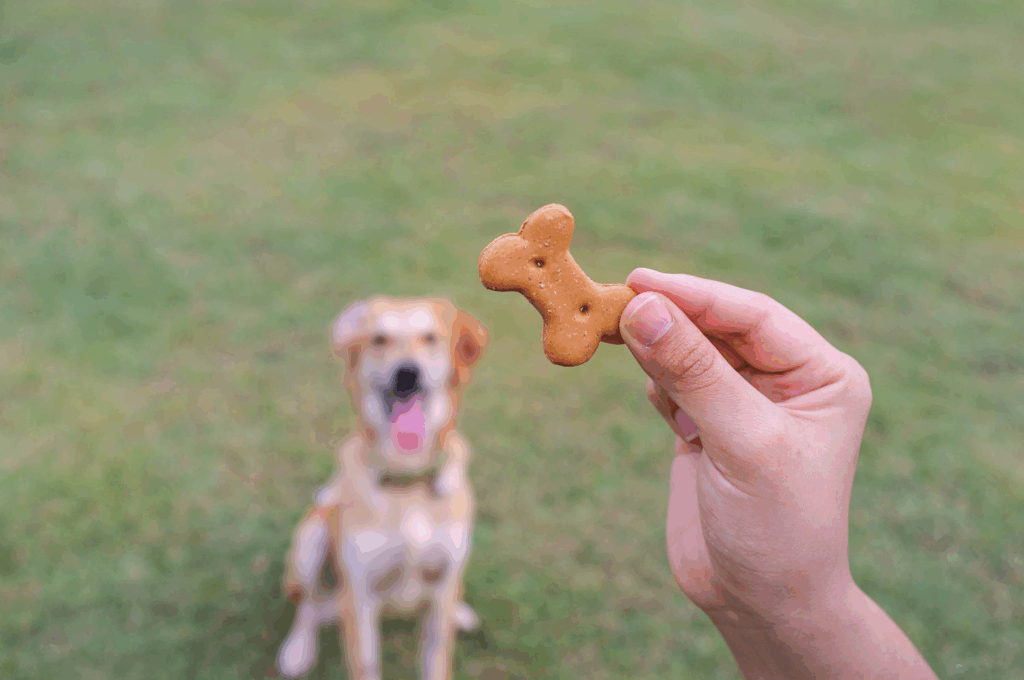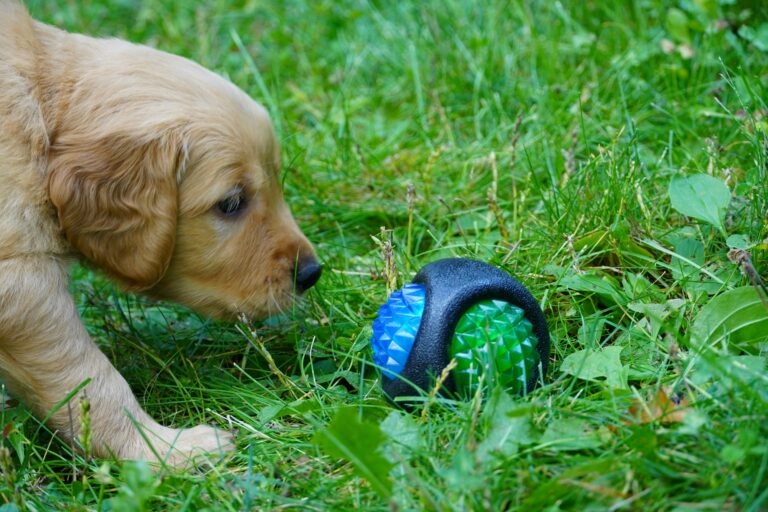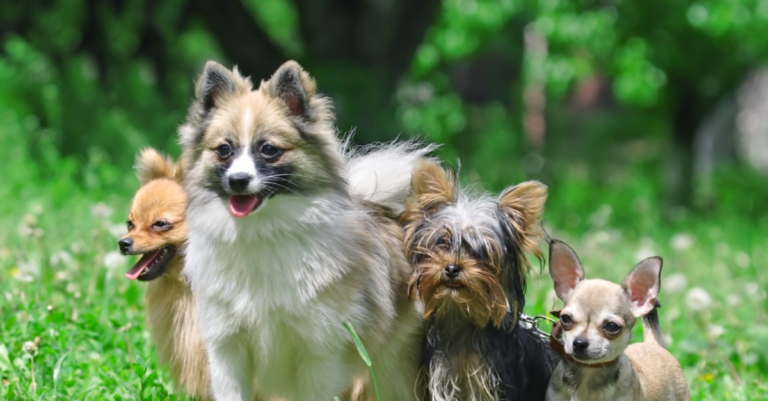Transforming your pint-sized pooch into a well-behaved companion may seem like a Herculean task. However, with the right tools and treats, it can be as easy as a walk in the park. “Train Like a Pro: Top Treats for Small Dogs to Make Training a Breeze” is your ultimate guide to navigating the often murky waters of canine training. In this comprehensive guide, you will gain an in-depth understanding of the best dog training treats that are sure to make your furry friend’s training sessions both fun and fruitful.
The journey to a well-trained dog begins with an understanding of their preferences and what motivates them. Dogs, much like humans, are driven by rewards – tasty ones to be specific. So, discovering the best treats to use as positive reinforcement in your training sessions is the key to a successful and enjoyable learning experience. In this guide, we will delve into the top-rated treats specifically tailored for small dogs.

Not only will we explore the different types of treats available, but we will also provide a detailed breakdown of their benefits, and why they are vital for training small dogs. We understand that with the myriad of options available, finding the perfect treats for your dog’s training can be daunting. Hence, we’ve done the legwork to present you with the ultimate list of the top treats that your dog will not only love but will also motivate them during training.
Moreover, we will share expert tips on how to effectively incorporate these treats into your dog’s training routine. Whether you’re training a new puppy or looking to improve your older dog’s obedience, “Train Like a Pro: Top Treats for Small Dogs to Make Training a Breeze” is your ticket to a well-behaved and happy pet. So sit back, relax, and embark on this journey to successful dog training with us!
Understanding the Basics of Dog Training
Training your dog can be a complex process, especially for small dogs. One of the keys to effective dog training is understanding your dog’s motivations. Dogs are motivated by a variety of things, including food, play, and social interaction. In the context of training, treats can be an effective motivator. They can be used as a reward for desired behavior, reinforcing the behavior and encouraging the dog to repeat it.
There is a wide range of dog treats available on the market, but not all of them are suitable for small dogs. Small dogs have different dietary needs and preferences compared to larger breeds, so it’s important to choose treats that are appropriate for your pet.
Choosing the Right Treats for Small Dogs
When choosing treats for small dogs, there are several factors to consider. The size of the treat is obviously important – treats should be small enough for your dog to eat comfortably, but large enough to be rewarding. The texture of the treat can also make a difference. Small dogs often prefer softer treats, as these are easier to chew and digest.
Another important consideration is the nutritional value of the treat. While treats are not meant to replace your dog’s regular diet, they should still contribute to their overall nutrition. Look for treats that are high in protein and low in fat and sugar. Avoid treats with artificial colors, flavors, or preservatives, as these can be harmful to your dog’s health.
Nutritional Ingredients to Look for in Dog Treats
Some key nutritional ingredients to look for in dog treats include:
- Protein: This is the most important nutrient for dogs. It provides the building blocks for muscle growth and repair.
- Fiber: Fiber aids digestion and can help prevent constipation and diarrhea. It also helps your dog feel full, which can prevent overeating.
- Vitamins and minerals: These are essential for maintaining your dog’s overall health. They support a variety of bodily functions, from immune response to bone health.
Top Treats for Small Dogs
Finding the right training treat for your small dog can make all the difference when it comes to achieving consistent and positive results during training sessions. Treats serve as a direct motivation for dogs and, when chosen wisely, can enhance both the speed and enjoyment of learning new behaviors. Small dogs, due to their tiny mouths and sensitive digestive systems, benefit from treats that are appropriately sized, easily digestible, and packed with nutritional value.
Training treats are not merely about taste; they are also tools to build trust, strengthen communication, and make the training process rewarding for both you and your canine companion. Choosing high-quality, healthy treats ensures that you are supporting your dog’s overall well-being while making training more effective.
Zuke’s Mini Naturals
Zuke’s Mini Naturals are a popular choice for small dog breeds. These treats are small in size, making them perfect for training. They are also soft, which is beneficial for dogs with smaller mouths or sensitive teeth. The small, uniform pieces allow you to reward your dog frequently during training without the risk of overfeeding or causing digestive upset.
Most importantly, Zuke’s Mini Naturals are made with high-quality ingredients. The first ingredient is real meat, which provides a good source of protein necessary for muscle development and maintenance. These treats also contain wholefood cherries and turmeric, known for their antioxidant and anti-inflammatory properties, offering an added health boost alongside delicious taste.
Moreover, Zuke’s Mini Naturals are free from corn, wheat, and soy, which are common allergens in dogs. This makes them a safe and reliable choice for dogs with food sensitivities. Available in various flavors like chicken, peanut butter, and salmon, they cater to a wide range of canine preferences, keeping training exciting and varied.
Blue Buffalo Blue Bits
Blue Buffalo Blue Bits are another excellent choice for small dogs. These treats are soft and moist, making them easy to chew and digest. They are small enough to be used frequently during training sessions without causing weight gain, a critical factor for small breeds prone to obesity.
The main ingredient in Blue Buffalo Blue Bits is real meat, providing a high-quality source of protein crucial for energy and muscle health. These treats also contain brown rice, oatmeal, and sweet potatoes, which are easy to digest and offer an excellent source of fiber. The inclusion of DHA, an important fatty acid, supports cognitive development, making these treats ideal for young puppies in training.
Blue Buffalo ensures that their treats are free from artificial preservatives, colors, and flavors. This commitment to natural ingredients supports your small dog’s health while providing a highly motivating reward that they will love.
Wellness Soft Puppy Bites
Wellness Soft Puppy Bites are crafted specifically for puppies but work exceptionally well for small adult dogs too. These treats are soft, small, and bursting with flavor, making them highly appealing during training sessions. The texture is gentle on tiny teeth and ideal for dogs with sensitive gums.
Each bite is packed with wholesome ingredients like lamb and salmon, offering an excellent combination of protein sources. Additionally, these treats are fortified with essential vitamins and minerals to support overall health. Wellness Soft Puppy Bites contain no meat by-products, artificial flavors, or preservatives, ensuring that your small dog gets only the best during training.
Old Mother Hubbard Bitz
Old Mother Hubbard Bitz are tiny, crunchy treats that can also be a fantastic option for small dogs who prefer a bit of a crunch. These treats are baked slowly to preserve their natural flavors and nutrients. They come in various flavors like liver, chicken, and cheddar, providing enough variety to maintain your dog’s interest.
Made with simple, natural ingredients, Old Mother Hubbard Bitz are free from artificial additives and are carefully crafted to offer a balanced reward. Their firm texture can also help in maintaining dental health by gently cleaning teeth during chewing.
Using Treats for Training
Once you have chosen the right treats for your small dog, the next step is learning how to use them effectively. Treats can be a powerful tool for reinforcing desired behaviors, but using them correctly is crucial for successful training.
The treat should be given immediately after the desired behavior is performed. Timing is everything when it comes to reward-based training. A delay between the action and the reward can confuse your dog and diminish the effectiveness of the reinforcement. Clear communication through precise timing helps your dog quickly understand which behaviors earn rewards.
It is also important to vary the rewards. While treats are incredibly motivating, mixing them with verbal praise and petting can create a well-rounded reinforcement system. This prevents your dog from becoming overly dependent on treats while maintaining motivation.

Treats should be small and used in moderation. Even healthy treats add calories, and it is essential to account for treats as part of your dog’s overall daily intake to prevent weight gain.
Training Tips for Small Dogs
Training small dogs comes with its unique set of challenges. However, with the right strategies, it can be an enjoyable and rewarding experience for both the dog and the owner.
Start with Basic Commands
Basic commands like “sit,” “stay,” “come,” and “down” form the foundation of good behavior. Teaching these commands builds a framework that can be expanded with more advanced training later on. Keeping sessions positive and focusing on one command at a time increases the likelihood of success.
Be Consistent
Consistency is key when it comes to dog training. Use the same words for commands, offer the same types of rewards, and ensure that everyone in the household follows the same rules. Mixed signals can confuse your dog and delay the learning process.
Keep Sessions Short and Positive
Small dogs can have shorter attention spans compared to larger breeds. It is best to keep training sessions between 5 to 10 minutes and repeat them several times throughout the day. Ending sessions on a positive note with a reward ensures that your dog associates training with fun and excitement.
Use High-Value Rewards for Difficult Tasks
When teaching a new or challenging behavior, use high-value treats that your dog loves the most. Special rewards can provide extra motivation to master difficult skills. Reserve these top-tier treats for times when extra encouragement is necessary.
Socialization is Part of Training
Training is not limited to obedience commands; it also includes socialization. Small dogs can sometimes develop fear-based behaviors if not properly socialized. Introducing your dog to various people, environments, sounds, and experiences helps them become confident and adaptable.
Transitioning Away from Treats
While treats are essential during the initial stages of training, the ultimate goal is to have your dog obey commands without needing a food reward every time. Once your dog has reliably learned a behavior, you can start to phase out treats gradually.
Begin by rewarding every second or third successful behavior rather than every single time. Gradually increase the number of times your dog must perform the behavior before receiving a reward. Eventually, replace treats with verbal praise, petting, or a favorite toy to maintain motivation without relying solely on food.
Incorporating variable reward schedules, where the dog does not know when the reward will come, can actually strengthen the behavior further. This method keeps the dog guessing and maintains their enthusiasm for training.
Troubleshooting Common Challenges
Even with the best treats and training plans, challenges may arise. Understanding common issues can help you adjust your approach and maintain progress.
If your dog becomes too excited during training and loses focus, take a short break and try again later. Overexcitement can reduce the effectiveness of learning.
If your dog is not motivated by treats, experiment with different types, textures, and flavors. Some dogs may prefer meat-based treats, while others are more motivated by cheese or peanut butter flavors.
If progress stalls, return to simpler behaviors that your dog already knows and reward them heavily for success. This builds confidence and sets the stage for tackling more complex tasks later.
Conclusion
In conclusion, “Train Like a Pro: Top Treats for Small Dogs to Make Training a Breeze!” emphasizes the importance of using the right treats to enhance your small dog’s training process. The article extensively explores how specific treats can help make training sessions more enjoyable and productive. With small dogs, the right treats can significantly increase their attention span, willingness to learn, and overall training success.
The variety of treats discussed in this article offers a wealth of options for dog owners to choose from, catering to the unique tastes and preferences of their pets. Remember, rewarding your small dogs with their favorite treats doesn’t just make training easier; it also strengthens your bond with them, turning training sessions into fun, shared experiences.
In the end, the key to effective training lies in consistency, patience, and the right rewards. Whether you’re training your dog to sit, stay, or perform intricate tricks, these top treats can certainly make the process a breeze. Here’s to successful training sessions and a stronger bond with your beloved small dogs!



